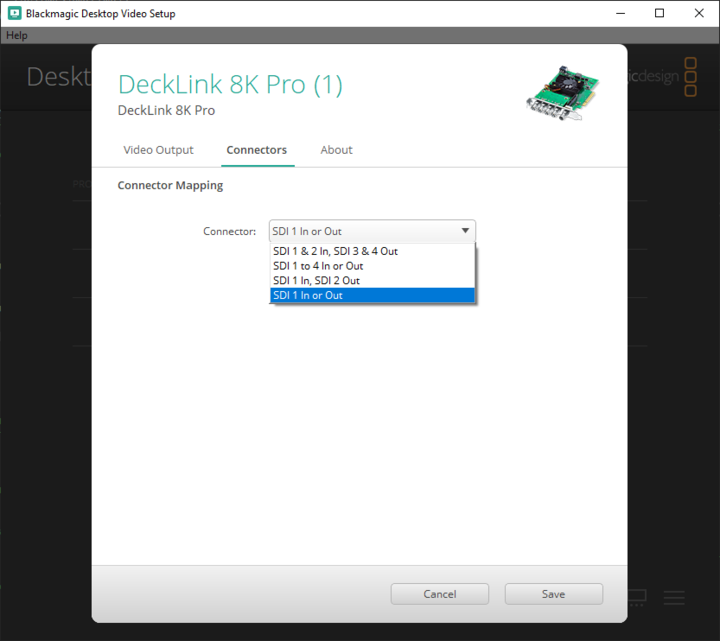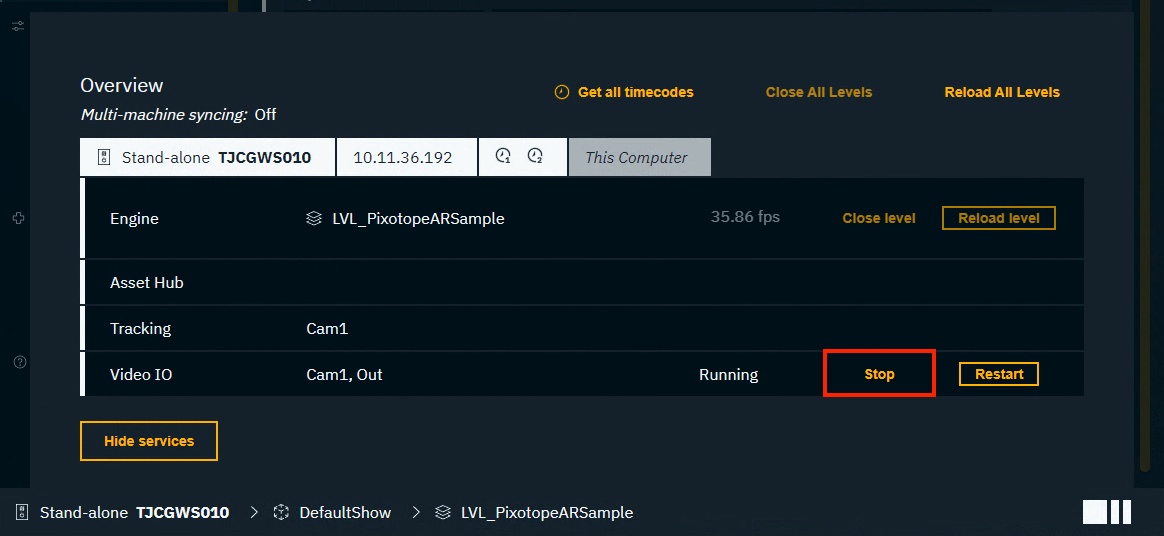Supported input and output types
For formats see Supported video formats and frame rates
AJA
See System Requirements for supported AJA video cards
Input/Output options
Input | Input source | Spigot number |
|---|---|---|
Channel |
| |
Output | Output destination | Spigot number |
Output type |
Learn more about Compositing modes | |
Audio | Enable Learn more about how to Configure audio output |
BMD
See System Requirements for supported BlackMagic Design DeckLink video cards
Blackmagic Desktop Video Setup
Set the Connector Mapping to
SDI 1 In or Outin the Blackmagic Desktop Video Setup application
Input/Output options
Input | Input source | Spigot number |
|---|---|---|
Channel |
| |
Output | Output destination | Spigot number |
Output type |
Learn more about Compositing modes | |
Audio | Enable Learn more about how to Configure audio output |
NDI
Video streaming protocol - What is NDI?
Input | Input source | Any NDI stream on this network |
|---|---|---|
Output | Output destination | Name of your output stream |
Output type |
Learn more about Compositing modes |
SRT
SRT is an established open source video streaming protocol
Input and Output | Mode |
|
|---|---|---|
Send to | Applicable for Caller mode
| |
Port | Port number - default: | |
Codec |
| |
Latency buffer | Latency in ms - default: | |
Password | If a password is set, the stream is encrypted - default: no password set |
The frame rate of the incoming stream (caller) and the input (listener) must be the same!
If the Editor drops its frame rate will below the one chosen, it will lead to an SRT input buffer overflow. This then causes a rebuild of the videoIO pipeline which will, during rebuild, display “Misconfigured Input Signal”.
The frame rate of the output (caller) and the listener of the stream must be the same!
If the receiver of the output is not able to consume the incoming packets fast enough its SRT receiver buffer will overflow and most likely break the connection.



